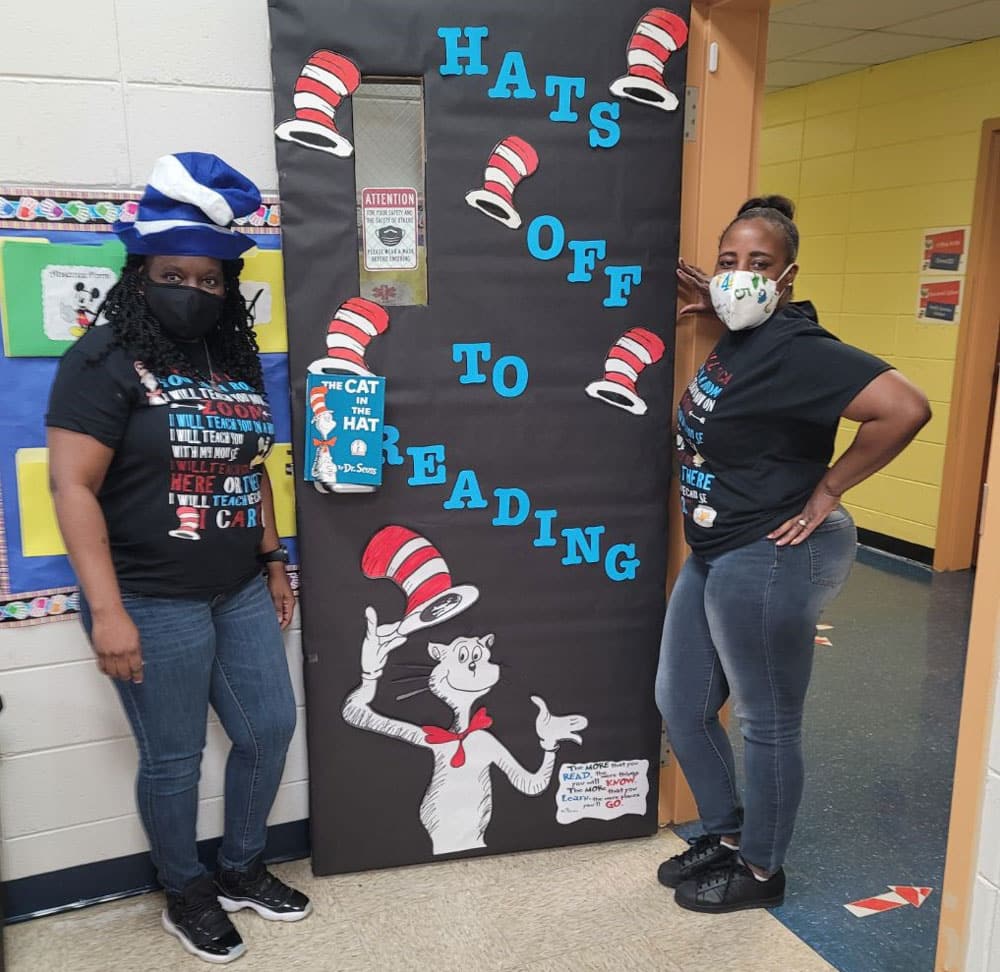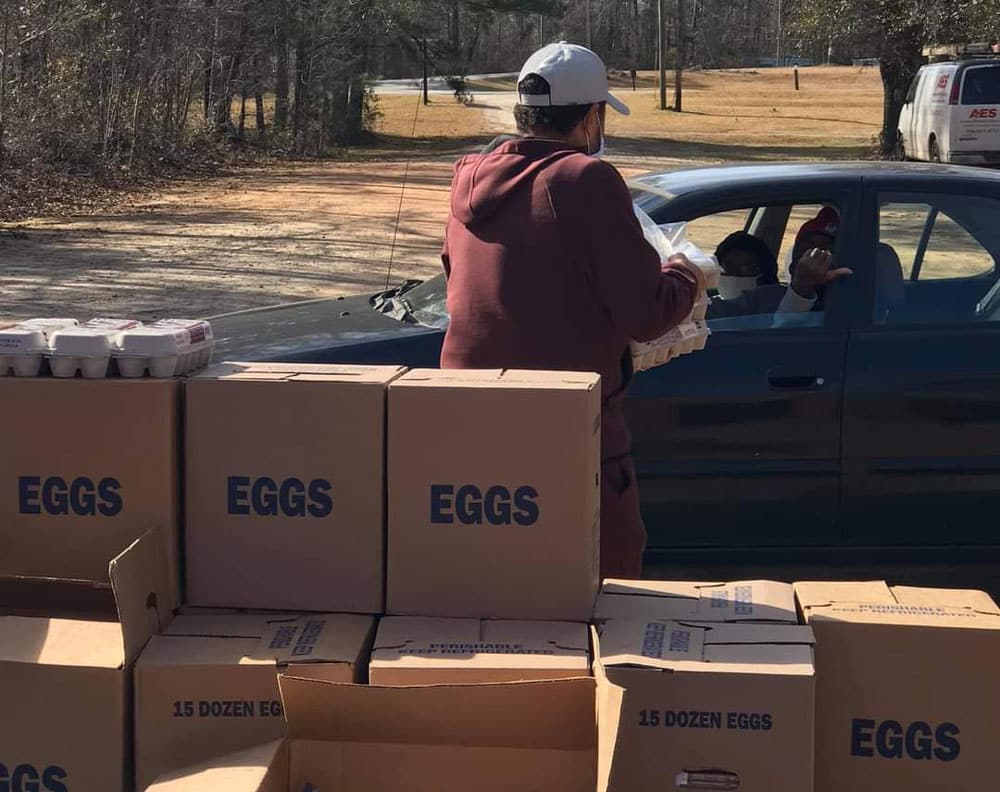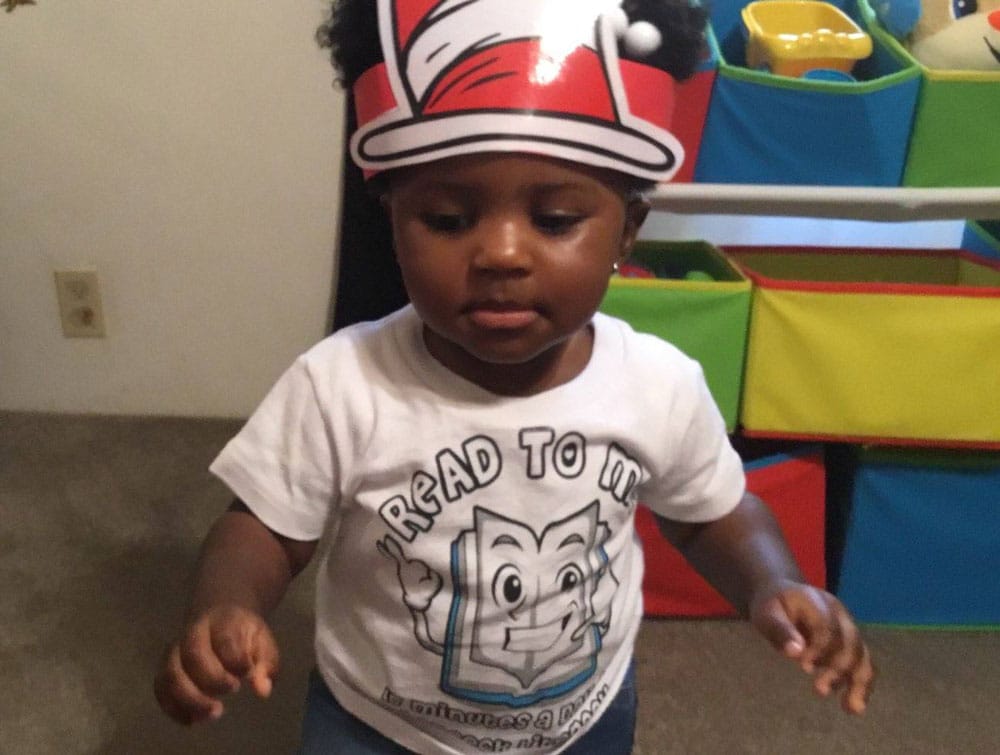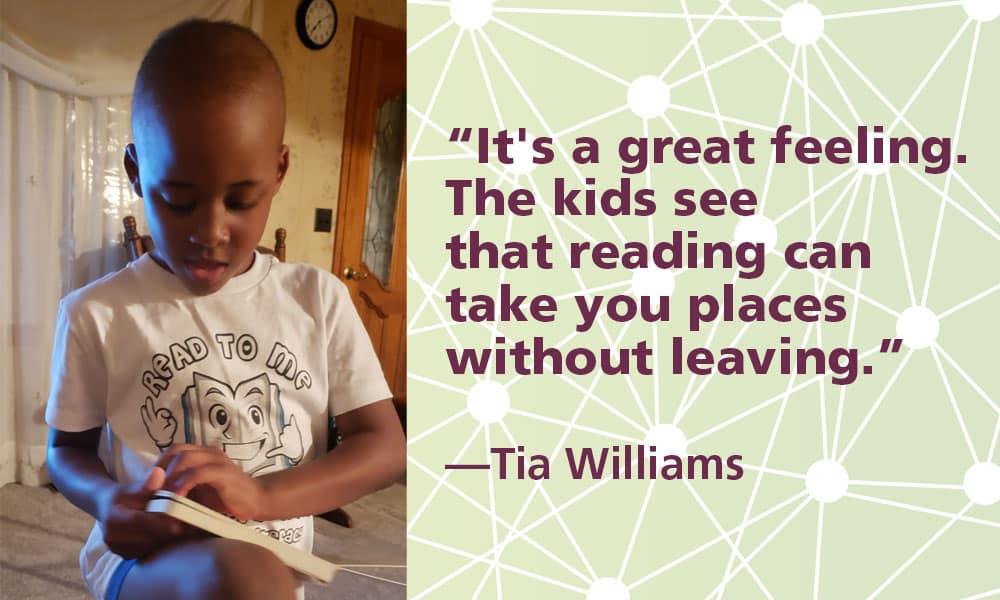At-Home Reading Resources Help Children and Families in Rural Hancock County

by Madeline Zupko
Head Start and pre-K teachers in Hancock County are determined to deliver quality education no matter the circumstances, even going as far as decorating their student-less virtual classrooms to celebrate Read Across America this spring.
“We’ll teach you in a room. We’ll teach you on Zoom. We’ll teach you in a house. We’ll teach you with a mouse. We’ll teach you here and there. We will teach you because we care,” proclaimed a pre-K teacher standing next to her classroom door.
This is just one of the ways these dedicated educators are virtually engaging with their students with limited resources. Due to the rural landscape of the county, families often struggle with access to the internet, which causes barriers between children and online educational resources. With the added stress of the pandemic, these barriers are even more detrimental to the success of students.
As one of five county Collaboratives selected to pilot the Get Georgia Reading at Home initiative, community partners in Hancock County are helping parents and caregivers connect with their children at home by utilizing fun activities and resources they received from the Get Georgia Reading Campaign, Georgia Public Broadcasting (GPB), and Georgia Department of Education (GaDOE).
“Pre-pandemic, broadband has always been an issue in our community,” said Hancock County Family Connection-CIS Executive Director Regina Butts. “Internet access has always been an issue in rural Georgia, including parts of Hancock County, even prior to the pandemic—and so has making sure our families have enough food.”
When parents had to stop working during the pandemic to stay home with their children, funds weren’t coming in to buy food, so the county Collaborative got together with local food banks, churches, and other organizations to offer bi-monthly food drives.

“We were doing that before the pandemic and will continue to do it after,” said Butts. “Several food trucks have come in through our Collaborative to distribute meals in this food desert. We recently partnered with a local church to give out a thousand cartons of eggs, and when there was a milk surplus in schools because consumers were staying home, the USDA brought us 300 gallons of milk that we distributed in our community.”
The Get Georgia Reading at Home program aims to give families ideas for educational activities to do together at home and offline. The resources also provide guidance for families on food access, health care, and financial assistance.
Families in Hancock County received an informational activity booklet from Get Georgia Reading and a Digital Backpack from GPB full of resources for young learners, including fun, printable bingo activities to learn about nature, weather, and more. The Collaborative received $1,200 to purchase additional learning materials and partnered with schools to create kits for early learners and school-age children.
Three hundred students at Marvin E. Lewis Elementary School in grades K – 3 received packages filled with pencils, crayons, a pencil pouch, and erasers. Hancock County Early Head Start, Head Start, and pre-K students received a drawstring bag packed with a onesie or toddler-size T-shirt that says “Read to Me for 15 Minutes a Day” along with a storybook and registration form for Ferst Reader.

“Statistics show that just 15 minutes a day of reading aloud to a child for five years results in 27,375 minutes of language exposure, putting that child on the path to high literacy achievement,” said Butts.
Sylvia Jordan, a counselor at the school, noted that the curricula fits seamlessly into the Georgia Standards of Excellence domain strands of Reading Literary, Reading Informational, Reading Foundational Skills, Writing, Speaking and Listening, and Language, which makes planning summer lessons easy as students are offered a strong foundation of reading wherever they’re learning.
“Our students are in a win-win situation,” said Jordan. “Whether they are struggling or reading on grade level, both groups get the benefit of books being read and expounded upon at school and at home. Assignments reinforced at home and at school strengthens the bond between both places.”
Tia Williams, a Hancock County grandmother who aids in the education of her grandchildren and nieces and nephews, has also been able to utilize these materials in her at-home classroom. And she offers a “Kool-Aid Sip ’n’ Paint” for virtual learners in her neighborhood. “I tried to come up with something fun that the kids would like, and getting together with food is always good,” she said.

“The packets are helpful, and they make the approach to learning great,” said Williams. “I can now just say, ‘Pick a book you want me to read,’ then everybody can get a chance to look at the different books and choose one just by the cover and sit and listen or ask for it to be read again. It’s a great feeling. The kids see that reading can take you places without leaving.”
Jordan agreed and said the needs for learning resources, health care, and financial assistance in their community remains the same—except now they have become compounded like interest.
“Having a high population of COVID-19 patients in a small community causes everything to shift into a tailspin,” said Jordan. “The grief of dealing with the loss of loved ones, compiled with the loss of socialization and moving to virtual education took a toll on what was already a challenging learning environment. The outstanding resources given to the families in our school district will serve as a tremendous additional benefit to the curriculum this summer. And they will be used by our English- and Spanish-speaking populations.”
Georgia Family Connection Collaboratives in Burke, Decatur, Hancock, Mitchell, and Sumter counties are participating in the the Get Georgia Reading at Home pilot program, which provides materials to families that live in communities with low broadband access and a high prevalence of COVID-19 infection. Learn more.
